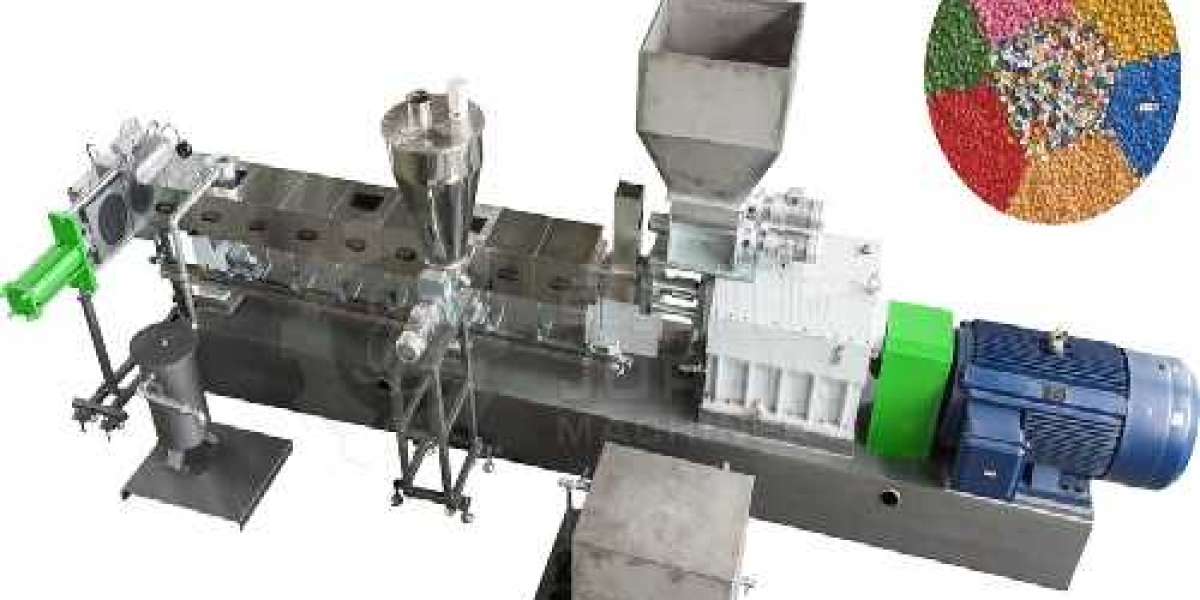In the realm of plastic manufacturing, the advent of filler masterbatch compounding extruders has marked a significant milestone. These specialized machines have revolutionized the process of incorporating fillers into plastic resins, offering enhanced efficiency, versatility, and quality in plastic production. In this article, we delve into the intricacies of filler masterbatch compounding extruder, exploring their functionalities, benefits, and the impact they've had on the industry.
Understanding Filler Masterbatch Compounding Extruders
Filler masterbatch compounding extruders are sophisticated equipment designed to homogeneously blend fillers, such as calcium carbonate, talc, or titanium dioxide, with plastic resins during the manufacturing process. These extruders are equipped with advanced technologies and precise control systems to ensure uniform dispersion of fillers within the polymer matrix.
Key Components and Working Principle
Components:
- Extruder Barrel: Where the plastic resin and filler materials are fed and melted.
- Screw Assembly: Responsible for conveying, melting, and mixing the materials.
- Die Head: Shapes the melted mixture into the desired form.
- Control System: Regulates temperature, pressure, and other processing parameters.
Working Principle:
- Feeding: Raw materials, including plastic resin and fillers, are fed into the extruder barrel.
- Melting and Mixing: The screw assembly rotates, conveying the materials forward while subjecting them to controlled heat and pressure, resulting in melting and thorough mixing.
- Extrusion: The homogenized mixture is forced through the die head, shaping it into the desired product form, such as pellets or sheets.
- Cooling and Cutting: The extruded product is cooled and then cut into the desired size or shape.
Advantages of Filler Masterbatch Compounding Extruders
- Enhanced Dispersion: These extruders ensure uniform dispersion of fillers within the polymer matrix, leading to consistent product quality and properties.
- Increased Efficiency: By automating the compounding process, these machines significantly reduce production time and labor costs.
- Versatility: Filler masterbatch compounding extruders can accommodate various types and concentrations of fillers, offering flexibility in product formulation.
- Cost Savings: The use of masterbatch reduces the need for handling and storing multiple raw materials, leading to cost savings in logistics and inventory management.
- Improved Product Performance: Proper dispersion of fillers enhances the mechanical, thermal, and aesthetic properties of the final plastic products.
Impact on the Plastic Industry
The adoption of filler masterbatch compounding extruders has reshaped the landscape of the plastic manufacturing industry. Manufacturers now have access to advanced technologies that streamline production processes, improve product quality, and reduce environmental impact. Furthermore, the versatility of these extruders enables the development of innovative plastic formulations tailored to meet the evolving demands of various industries, from automotive and construction to packaging and consumer goods.
Conclusion
Filler masterbatch compounding extruders represent a significant advancement in plastic processing technology, offering unparalleled efficiency, versatility, and quality in filler incorporation. As the plastic industry continues to evolve, these machines will play a pivotal role in driving innovation, sustainability, and competitiveness. Embracing the capabilities of filler masterbatch compounding extruders is essential for manufacturers seeking to stay ahead in today's dynamic market landscape.








